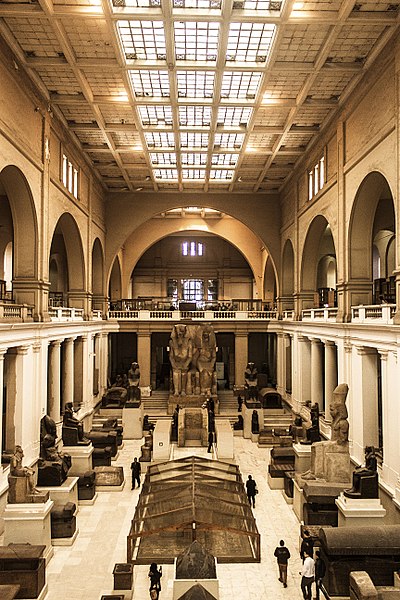
The Egyptian Museum in downtown Cairo is hosting an unprecedent exhibition of the King Khufu Papyri for a period of 15 days until July 29.
The exhibition — titled "The Papyri of Khufu from Wadi al-Jarf" — is based around papyri discovered at Wadi al-Jarf on the Red Sea coast, 119 km south of Suez.
The items were discovered in 2013 by a Franco-Egyptian mission led by French Egyptologist Pierre Tallet and Egyptian Egyptologist Sayed Mahfouz.
The papyri illustrate the daily lives of workers in the port during the reign of Fourth Dynasty King Khufu.They also show that workers and employees at Wadi al-Jarf port took part in the construction of the Great Pyramid at Giza, showing the advanced administrative system during the king's reign.
Khaled al-Enany, Minister of Antiquities, believes the papyri are the oldest examples of Egyptian papyrus writings yet discovered. They predate the Gebelein Papyri, which date to the end of the Fourth Dynasty and Abusir Papyri, which date to the end of the Fifth Dynasty.

A sample from the 'Papyri of Khufu from Wadi al-Jarf', as displayed at the Egyptian Museum in Cairo for 15 days in July 2016
Hussein Abdel Bassir, head of scientific publications at the Antiquities Ministry, said one important papyrus belonged to a middle-ranking official called Merer who was in charge of a team of sailors.
It provides a detailed account of the everyday work of this crew, which was transporting limestone blocks from the quarries of Turah on the east bank of the Nile to the Pyramid of Khufu at the Giza plateau, following a route along the Nile and its canals.
Sabah Abdel Razek, curator at the museum, said that most of the King Khufu Papyri are accounting documents, dated just after the 13th census of Khufu. This regnal date, probably corresponding to king's 26th year, is the latest known for him so far.
The Egyptian Museum will simultaneiously hold its first ever exhibition of archaeological replicas and books published by the ministry, taking place at the museums's back yard.
Amr al-Tibi, executive director of the archaeological replicas production unit at the ministry, explains that over the 15 period sculptors will reproduce clay and copper replicas to show to visitors how the ancient Egyptians made objects.
The ministry is offering a 20 percent discount on all replica objects. Publications are also being sold at a discount, with a 75 percent discount on all publications before 2011, and 20 percent on those after 2011.

Some pharanonic replicas on display in the Antiquity Ministry's first exhibition of replicas

Craftsmen put the finishing touches to a replica chariot put on display by the Antiquities Ministry



